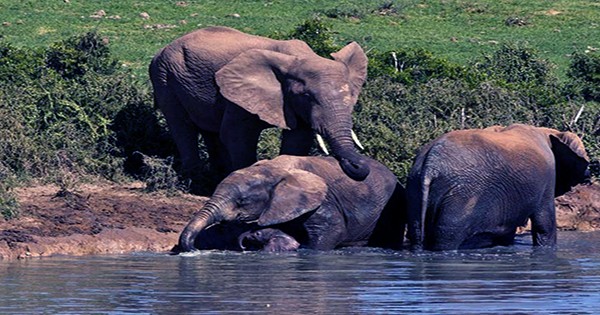According to an Indian study, Asian elephants loudly lament and bury their dead calves, which is similar to human funeral ceremonies.
According to a study published this week in the Journal of Threatened Taxa, researchers discovered five calf burials by huge mammals in the north of India’s Bengal area in 2022 and 2023.
They discovered that on each occasion, a herd carried the deceased calf by the trunk and legs before burying it in the ground with its legs facing upward.

“Through opportunistic observation, digital photography, field notes, and postmortem examination reports, we suggest that the carcasses were buried in an abnormal recumbent style irrespective of the reasons for the calf’s death,” the researchers wrote in their paper.
The authors reported that at one point, the herd shouted and trumpeted around the buried calf.
According to the report, only calves are transported for burial because the rest of the herds are unable to transport heavier adult elephants.
Parveen Kaswan and Akashdeep Roy, the authors, stated that their analysis discovered “no direct human intervention” in any of the five calf deaths.
Clear footprints of 15 to 20 elephants were found around the burial places and on the earth covering the bodies of the calves, all of which died from multiple organ failure between the ages of three months and a year.
The elephants buried their calves in irrigation channels on tea fields, hundreds of meters from the nearest human settlement.
Elephants are well-known for their sociable and cooperative behavior, but calf burial has only been “briefly studied” in African elephants, leaving it unknown among their smaller Asian cousins, according to the study.
Wild elephants in both Africa and Asia have been observed visiting carcasses at various states of decomposition, but this study discovered distinct behaviors across the herds analyzed.
In all five cases, the herd “fled the site within 40 minutes of burial” and then avoided returning to the area, adopting distinct parallel migration patterns.
Asian elephants are classified as endangered by the International Union for Conservation of Nature.
An estimated 26,000 of them live in the wild, predominantly in India but also in Southeast Asia, and live for an average of 60-70 years outside captivity.















